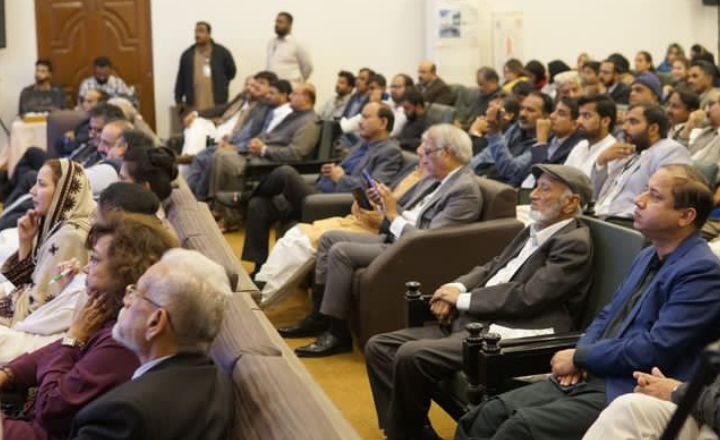National, International Archaeologists and Anthropologists present papers at a conference titled ‘Indus Valley Civilization: An Unfinished Agenda’
Karachi, Sindh
The national and international archaeologists and anthropologists have underlined the need of modern technology, laboratories and the human resources for conducting the research on a scientific way and preserving the archaeological sites of Indus Valley Civilization as well as other civilizations.

Such views were expressed by the experts at a conference titled ‘Indus Valley Civilization: An Unfinished Agenda’, organized by Sindh government’s Antiquities Department in collaboration with Sindh Exploration & Adventure Society at National Museum of Pakistan in Karachi on Saturday January 13, 2024.
Dr. Jonathan Mark Kenoyer, American archaeologist from the University of Wisconsin, Madison, Dr. Joseph Schuldenrein, also an archaeologist from America, Zaffar Iqbal from Hunza University, Zakir Khan from Hazara University, Mehreen Bukhari from Italy, Dr. Sarfaraz Solangi, Dr. Asma Ibrahim, Dr. Kaleem Lashari and other experts presented their papers at the conference.

Dr. Syed Junaid Ali Shah, Caretaker Minister for Culture & Antiquities, was the chief guest, who said in his address that the Indus Civilization was the mother of all other civilizations. “We are fortunate for having such an ancient treasure of civilization.”
Stating that Sindh government is working on various schemes related to the research on ancient civilization of Sindh, he said the provincial antiquities department is establishing an Archaeological Laboratory at Hub area and the work on this project is almost in final phase.
“We had to send precious artifacts of Indus Valley Civilization for research to Italy, France and other countries, but now the research could be carried out at national level,” he added.

Emphasizing the mapping of Indus River, Caretaker Minister said a document in this regard would soon be released that would help understand the routes linked to the Indus Valley.
Dr. Juaid said that 2022 floods had caused severe damage to the archaeological sites in Sindh. “We must devise the ways to protect the archaeological sites from the natural disasters in future.”
Dr. Kaleem Lashari spoke about the threat to ancient archaeological site of Mohen Jo Daro posed by increasing subsoil water level. “In order to understand the Indus Civilization, one has to carry out study on other related civilizations,” he viewed.
Dr. Jonathan Mark Kenoyer said that the evidences found from Mohen Jo Daro and other civilizations indicate that this land produced many things and such products used to be exported. “The people of Indus Valley used to make ornaments from the seashells,” he said.

Ms. Mehreen from Italy spoke about the paintings on earthen ware found from Indus Valley archaeological sites.
Dr. Joseph Schuldenrein, in his paper said that during the dry core drilling at Mohen Jo Daro, evidences have been that more layers of ancient civilization are still underneath. He also drew attention to the rising water level and salinity that could erase those hidden evidences of civilization.
Dr. Zaffar Khan of Hazara University, Mansehra, in his paper spoke about the threat to the precocious artifacts found from Balochistan, as no measures have been taken so far for their preservation.
Published under International Cooperation with "Sindh Courier"

Comments